Slide Show: Oregon Hophead History
April 29, 2013
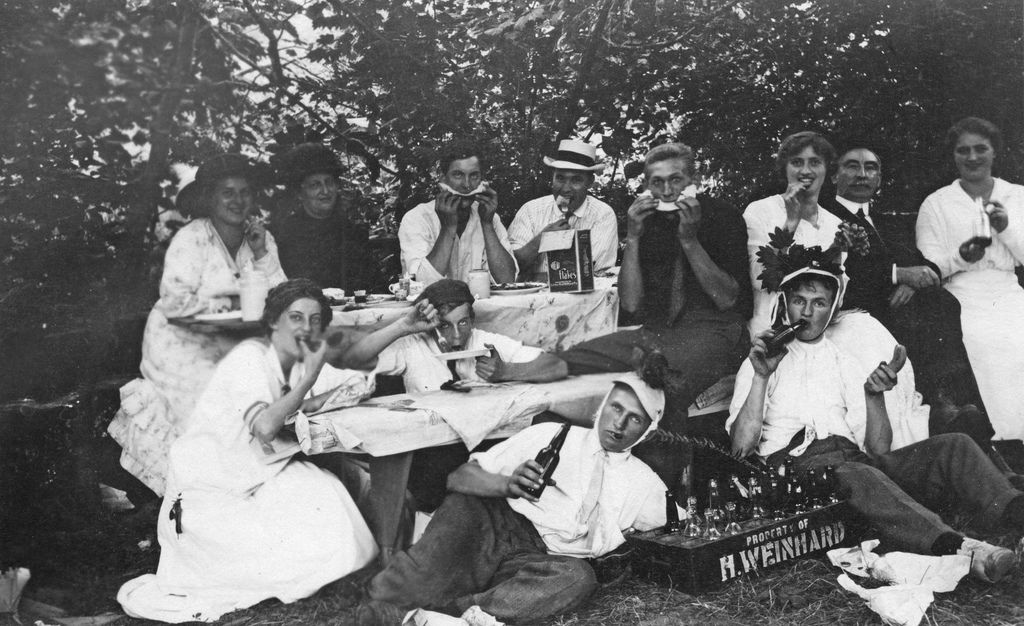
"Picnickers enjoying food and drink, including Weinhard beer"
Eat, drink, and be merry with these smiling (read; drunk) faces from the past. Some things are timeless! Keep clicking on for the history of Oregon's hop industry...
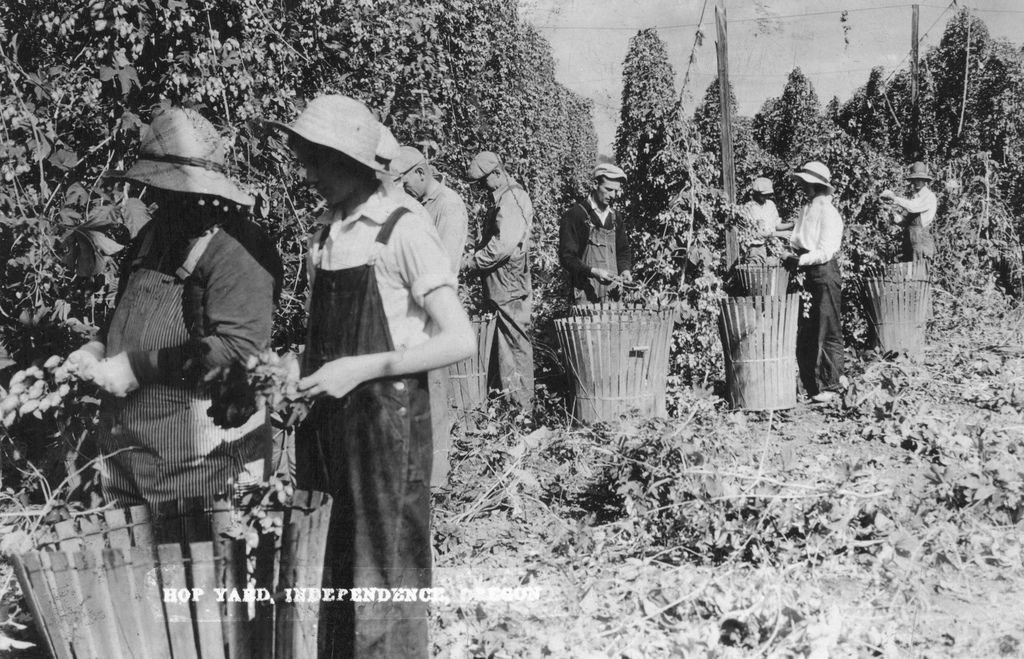
A hop yard in Independence, Oregon.
In 1867, Polk County's William Wells planted the first commercial hop yard in Oregon, and sparked a craze that still hasn't disappeared.
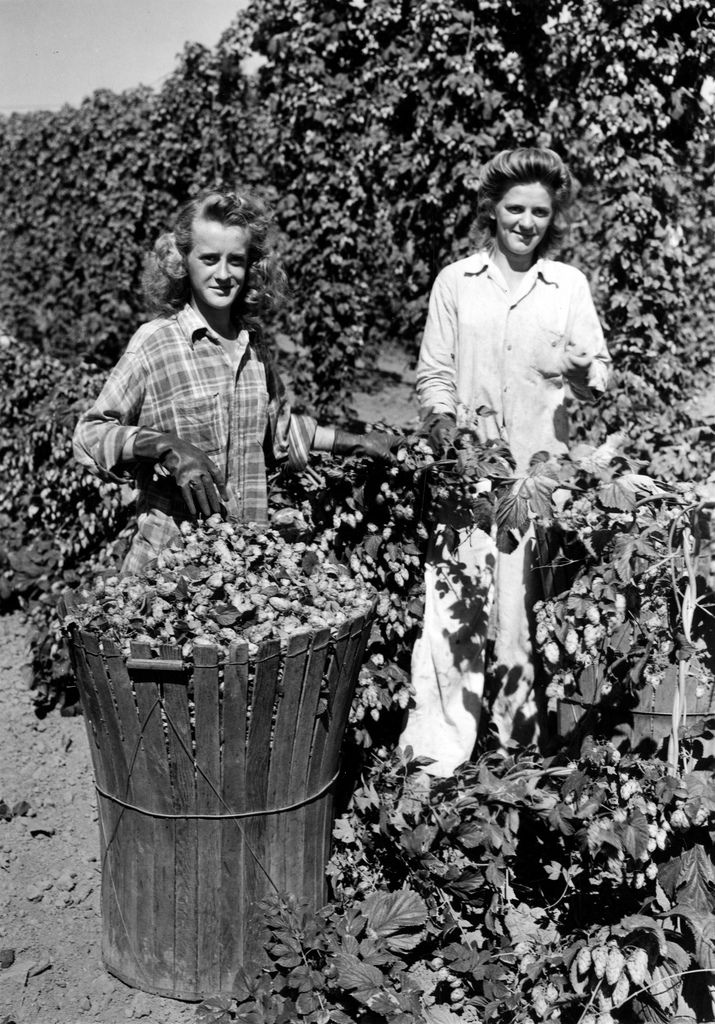
"Dorothy and Olgo Brutke picking hops"
Early hop production in Oregon occurred on small family farms (most less than twenty acres) where farmers grew hops as their sole cash crop.
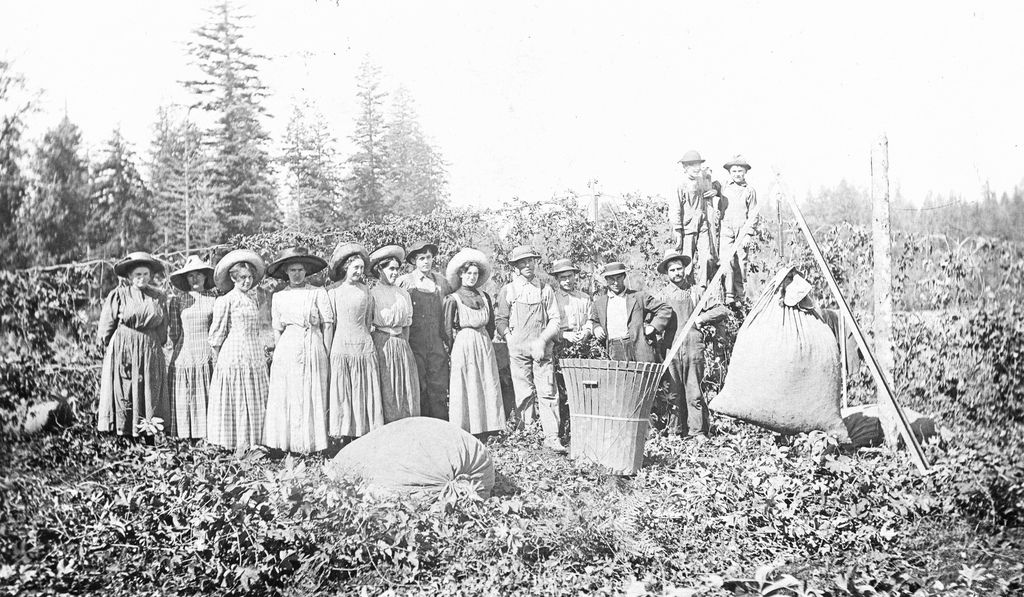
"Hop pickers at Meyer's hop yard"
The increase in hop production after prohibition required thousands of new seasonal laborers to harvest the crop, and everyone pitched in, from urban families and natives to soldiers. Thanks to the success of the hop industry, laborers earned good wages
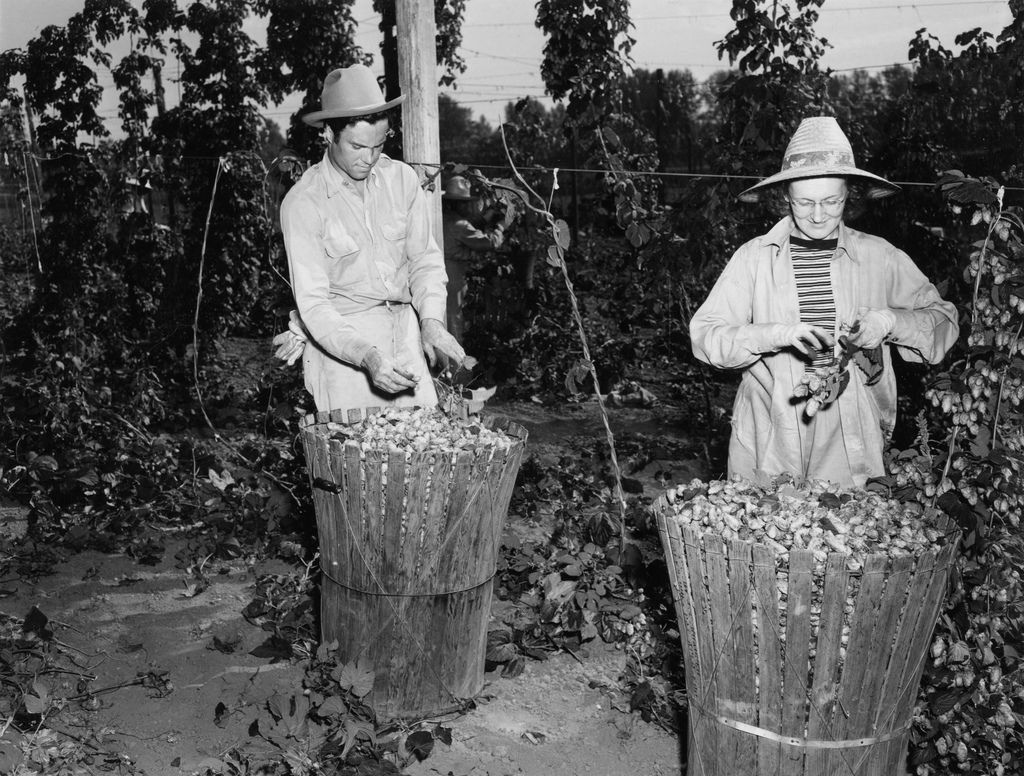
"Mr. and Mrs H.L. Worley at the Mitoma Hop Yard"
From 1905 to 1915, Oregon held the title of America's largest hop producer. Despite Prohibition and the Great Depression, Oregon hop production grew after World War I due to the disastrous effects of the war on European agriculture. In the 1930s (post-Pr
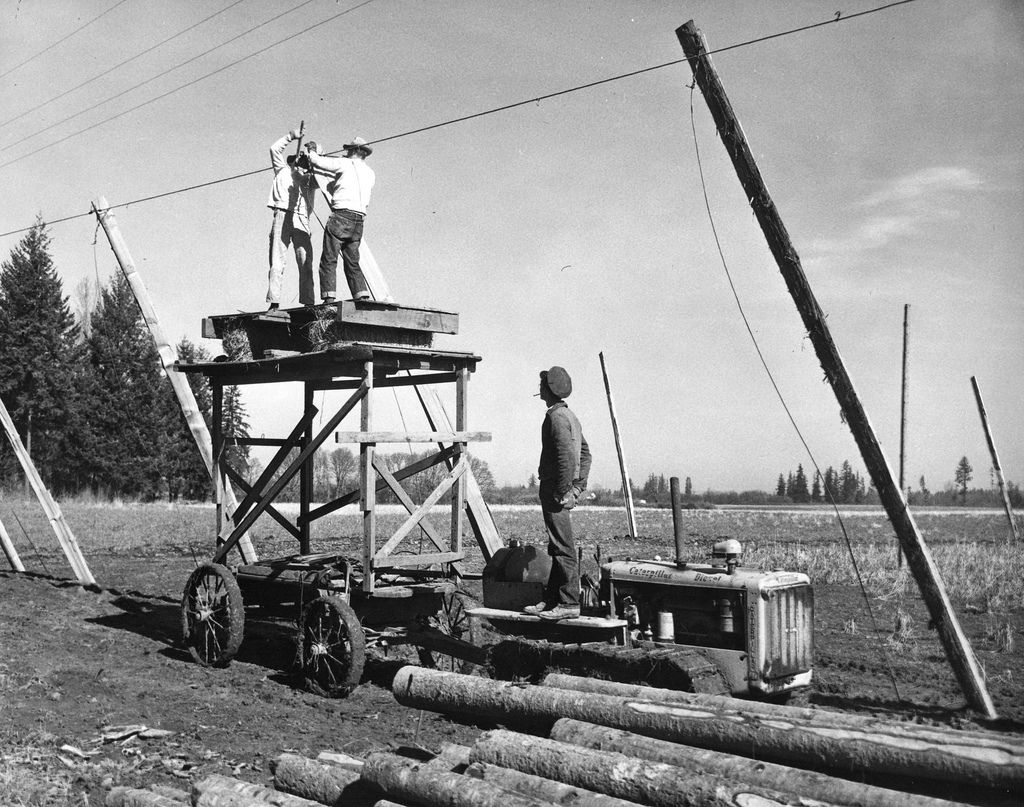
"Securing wire on hop job; tractor pulling high tower"
Hop yards required construction and maintenance throughout the year, from the building of wire and pole support systems to pruning, irrigation, and construction and operation of wooden hop dryers.
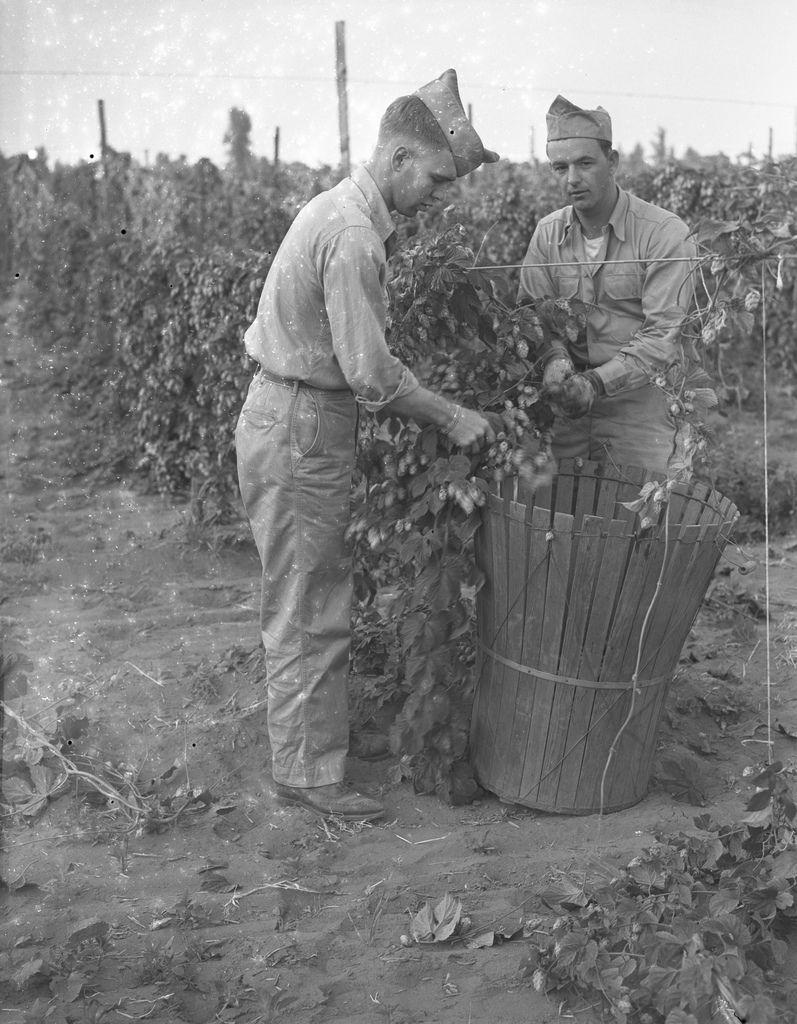
"Soldiers picking hops"
Major hop-producing areas could see the influx of over 25,000 workers during harvest season. Soldiers were common sights in the hop yards, and income from a few weeks of harvesting hops could sustain a living throughout the year.
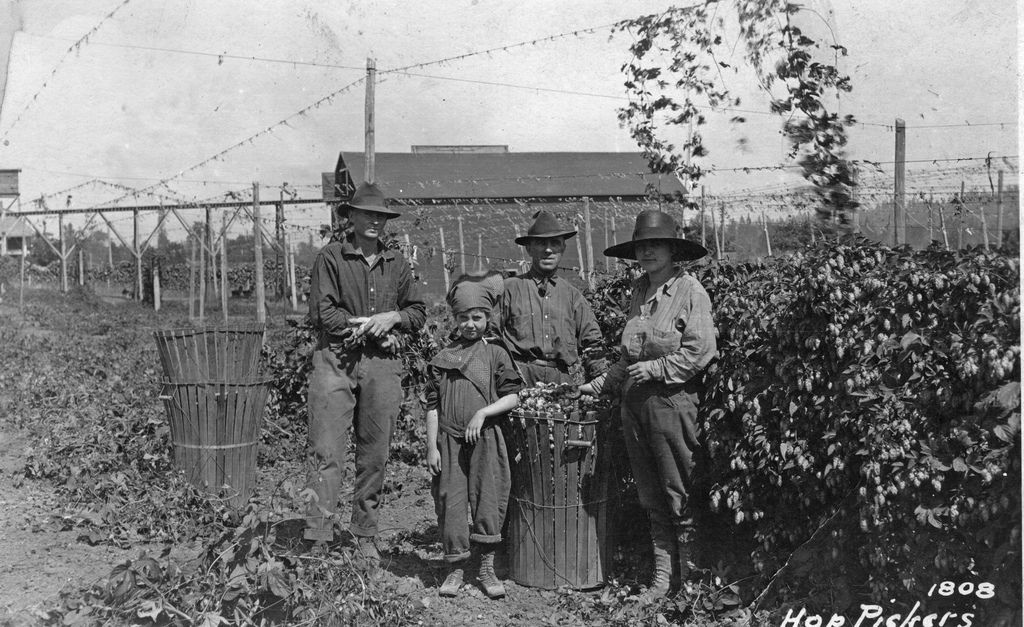
The hop-picking working day began early. Pickers would be in the field before 7 am. Harvesters wore their most casual clothes because hop stains were difficult to remove, and many would use canvas gloves to protect their hands from the scratchy vines.
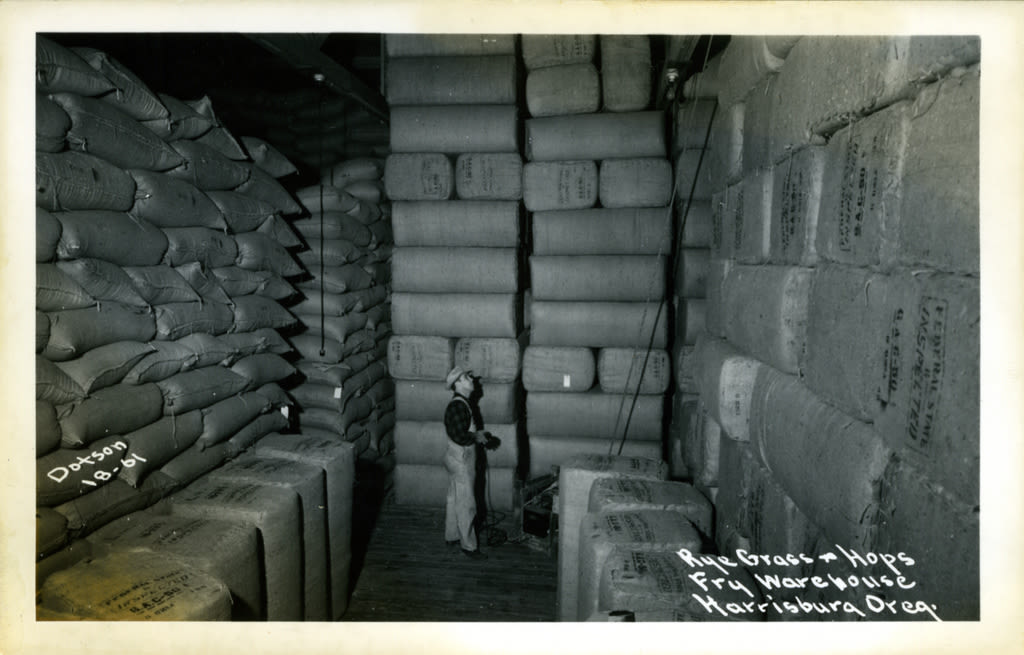
Rye grass and hops stacked high at the Fry Warehouse in Harrisburg, Oregon. By the early 1950s, mechanical picking machines eliminated the need for large numbers of seasonal laborers
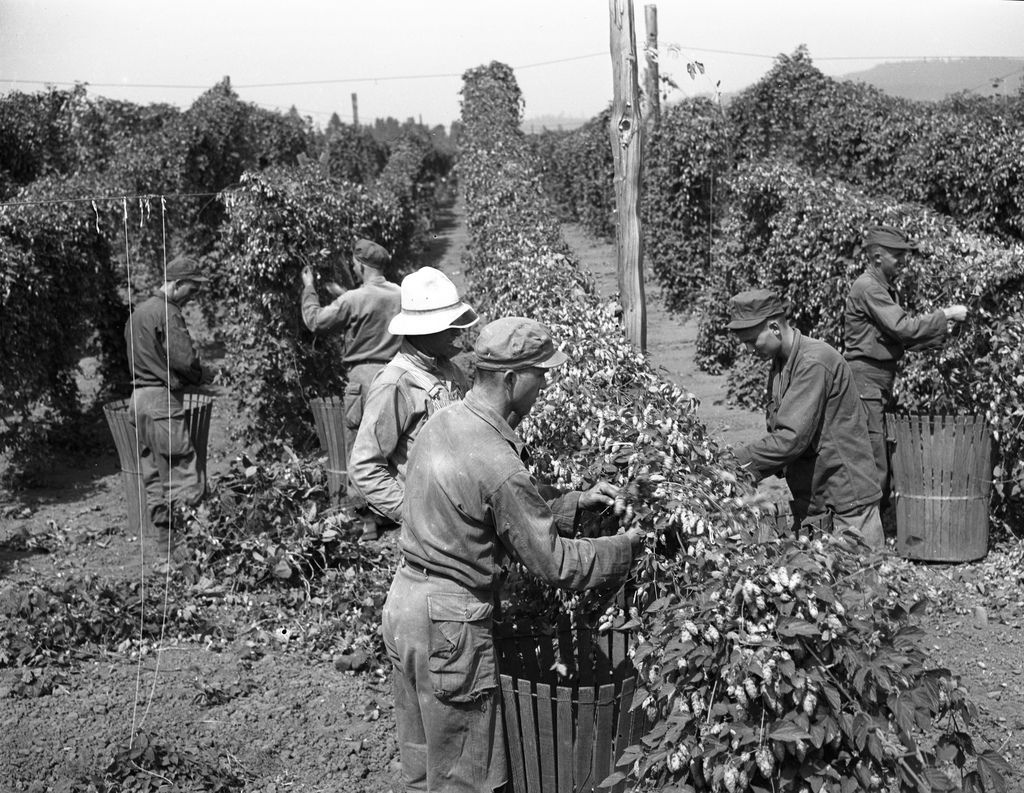
"Soldiers picking hops"
The rich soil and abundant rainfall of the Willamette Valley made the area an idea region for growing hops. Growers would often supply campgrounds, cabins, or ranches complete with general stores to house and support the workers and their families.
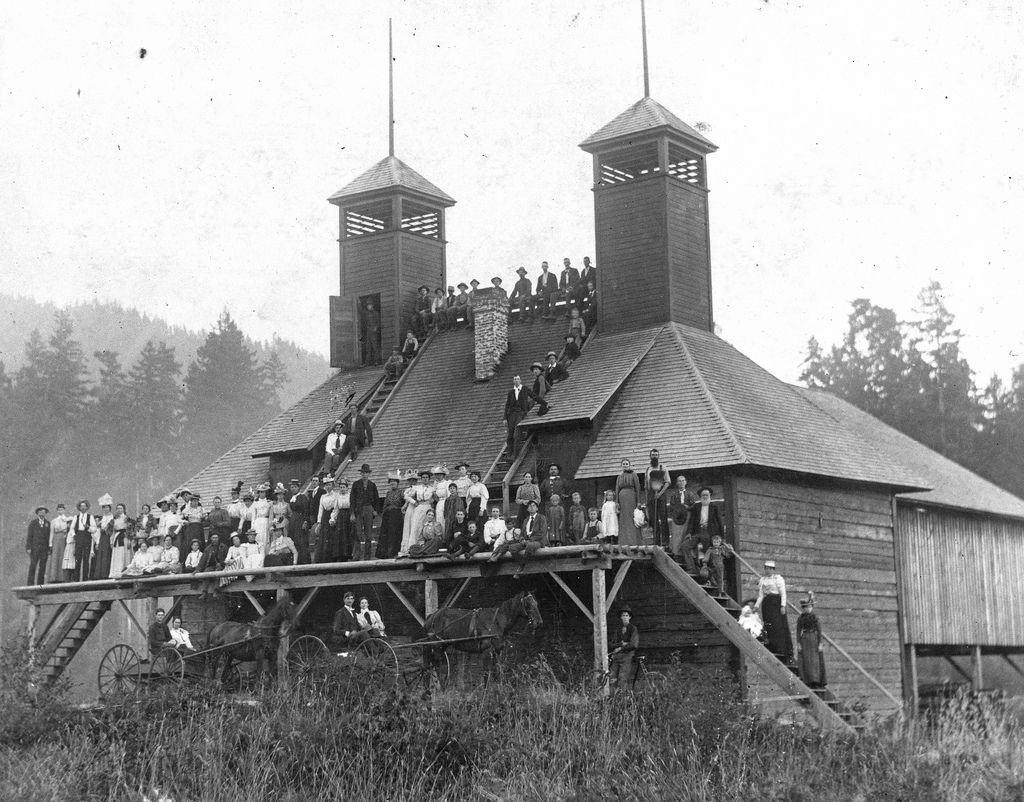
"Hop house in Lowell, Oregon"
Hop houses stored, kiln-dried, and compressed hops into 200-lb bales. The houses served as distribution points for harvested hops, and many hops were sold to prospective buyers a year before harvest.
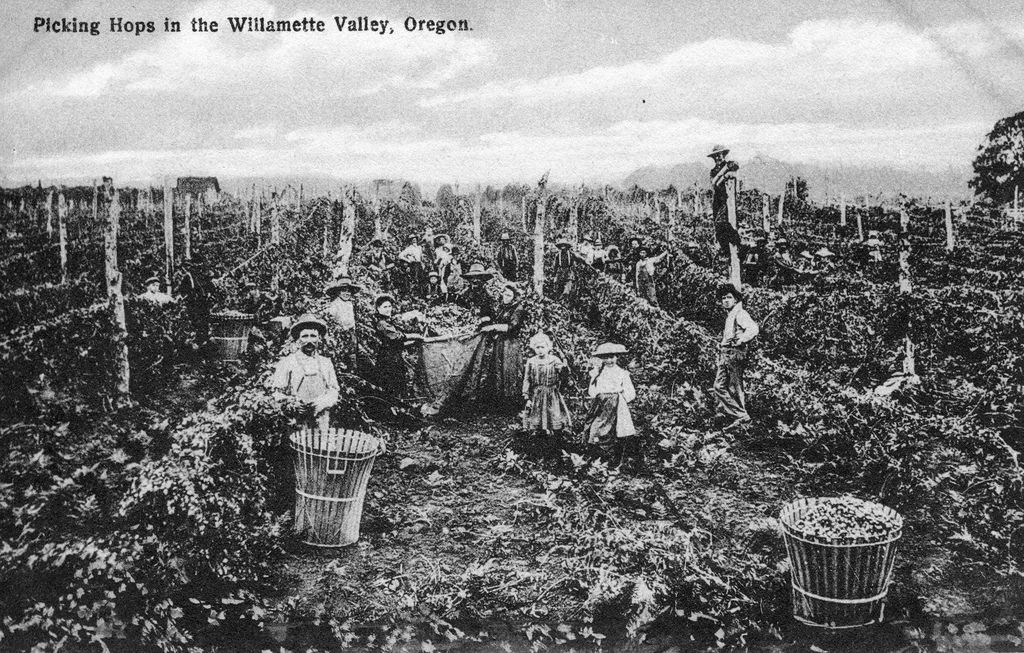
Many Oregon hop farms still in production today are owned by three- and four-generation hop families.
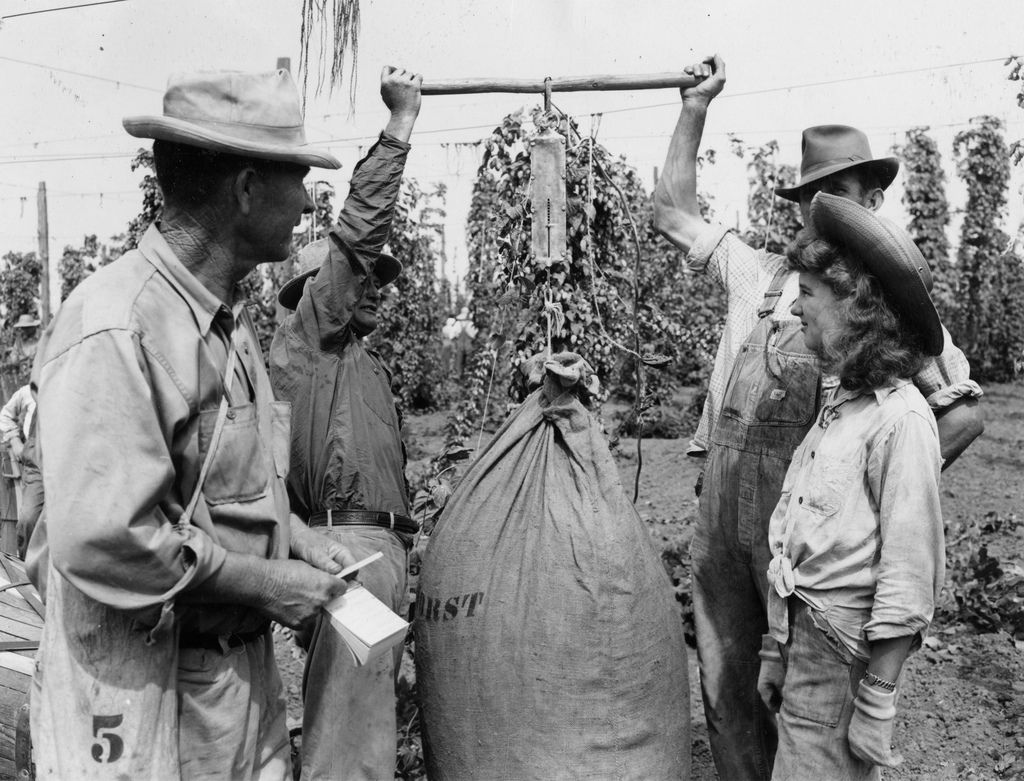
"P.M. Osborne, section boss from Salem, is watching two weighers hold the hops belonging to Myrna Hedrick, 14, Dequeen, Arkansas"
Harvested hops were put into sacks to be weighed and recorded by yard bosses, and harvesters young and old received credit for the hops they picked.
